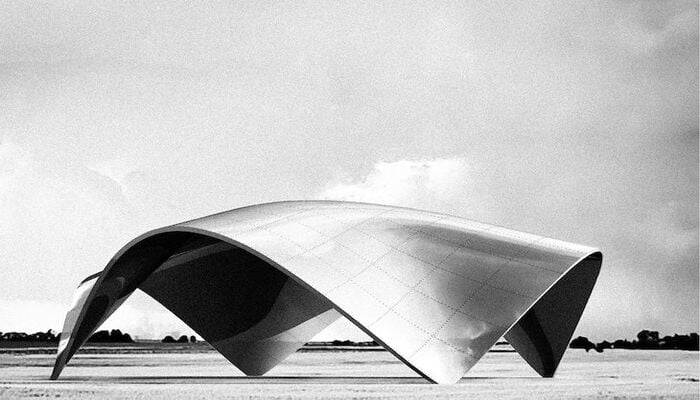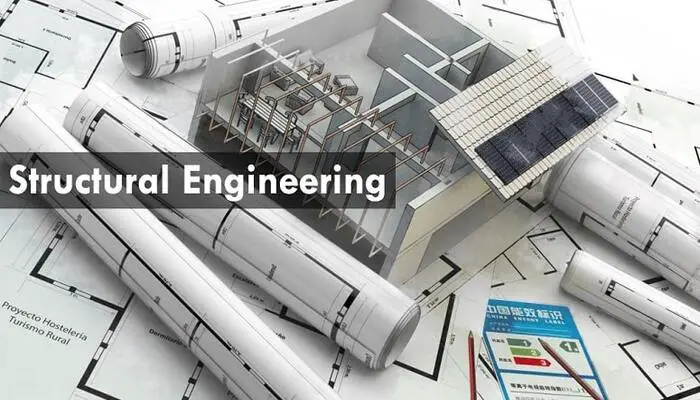Pushing the Boundaries of Architecture: 10 Innovative Shell Structures

Table of Contents
Step into the world of shell structures, where engineering meets art to produce breathtaking architectural marvels. In this blog, we will delve into the intriguing realm of shell structure examples, examining their benefits, renowned examples from all over the world, and the obstacles encountered during their design and construction.
What are Shell Structures?
Shell structures are thin, curved, or bent components used to envelop space and transmit loads. They consist of concrete, steel, or wood and can be found in buildings, bridges, and ships. Concrete is the most commonly used material because of its strength and affordability, whereas steel provides strength and lightness. Wood is preferred for its sustainable character and aesthetic appeal. Shell structures are known for their slenderness, which makes them lightweight and efficient, as well as their curvature, which ensures a uniform distribution of the load. They find applications in a variety of projects, including sports stadiums, concert halls, airports, suspension bridges, guy bridges, and ships. There are two major types of shell structures: simple-curved and double-curved. Examples include domes, barrel vaults, saddle roofs, cylindrical shells, and tapered shells. While shell structures offer benefits such as versatility and efficiency, their design and construction present certain challenges and considerations.
Advantages of Shell Structures
Shell structures provide many benefits in design and construction. Their effective use of materials, structural stability, space, aesthetically pleasing designs, versatility, longevity, and reduced construction time and cost make it an attractive choice for different applications. They optimize the use of materials by their thinness and curvature, achieving high weight resistance ratios while maintaining structural integrity. This inherent stability ensures they are resistant to heavy loads and adverse conditions. Shell structures offer open, flexible interior spaces ideal for sports stadiums, concert halls, and airport terminals. Their unique architectural forms, graceful curves, and flowing lines enhance their visual appeal. Materials like concrete and steel provide durability, strength, and weathering resistance. Simplified construction techniques reduce time and cost, but proper analysis, design, and construction techniques are crucial for successful implementation.
Building Examples of Shell Structures
Architectural forms known as shell structures are recognizable for their curved and seamless surfaces, offering both pleasing aesthetics and structural effectiveness. These structures often incorporate sail-shaped and triangular components, skillfully interlinked to produce visually impressive and practical designs. Presented below are various iconic shell structure examples from around the world, highlighting their individual designs and impressive engineering features. Each of these shell structures embodies a blend of art, engineering, and innovation, leaving a lasting impression on their respective cities and enchanting visitors from all over the globe.
1. Sydney Opera House, Australia

The Sydney Opera House, designed by architect Jorn Utzon, is an iconic shell structure in Sydney, Australia. It has a unique roof consisting of large concrete shell structures made from precast concrete panels supported by a steel framework. These interlocking triangular and sail-shaped sections create a series of overlapping shells, resembling billowing waves or sails. Beyond their aesthetic appeal, the shells also provide structural stability and efficient load distribution. The curvature of the shells enables an even force distribution and facilitates the transfer of loads to the supporting pylons and foundations.
The shell structure of the Opera House faces significant challenges in the requirement for advanced design and construction techniques to achieve complex geometric forms while ensuring structural integrity. The Opera House is an architectural masterpiece and a cultural venue that hosts various performing arts events. It has become a symbol of Sydney and Australia, attracting millions of visitors annually.
2. Montreal Biosphère, Canada

The Montreal Biosphere is a unique ecological museum in Canada, housed within a geodesic dome structure designed by Buckminster Fuller. The dome's geodesic dome is a strong and lightweight structure made of interconnected triangles, providing exceptional structural stability. The exterior shell is made of acrylic cells, allowing natural light to illuminate the interior, creating a bright and inviting atmosphere. The Biosphere's design aligns with its mission to raise awareness about environmental issues, with its shape representing Earth's fragility and the importance of conservation.
The dome also serves as a recreational space, offering panoramic views of the Saint Lawrence River and the surrounding environment. The geodesic dome, originally constructed for Expo 67, is an excellent example of adaptive reuse, having been preserved and repurposed after a fire in 1976. The Montreal Biosphere's geodesic dome structure serves as a stunning architectural landmark and a testament to its dedication to promoting environmental awareness and sustainable practices.
3. Sagrada Familia, Barcelona

The Sagrada Familia in Barcelona, Spain, is an exceptional example of a shell structure. Designed by Antoni Gaudí, it showcases intricate and organic architectural elements. Its shell structure features hyperboloid shapes that create a visually striking appearance. The curved surfaces intersect, forming a complex network of interlocking elements.
The shell serves both aesthetic and functional purposes, mimicking natural forms like waves or branches. It efficiently distributed loads to enhance structural stability. Gaudí faced engineering challenges during construction, employing innovative techniques and materials. The basilica remains a work in progress, incorporating modern methods while honoring Gaudí's vision. The Sagrada Familia exemplifies the fusion of shell structures and organic architecture. Its hyperboloid forms make it an iconic symbol of Barcelona's architectural heritage.
4. Millennium Dome, London

The Millennium Dome in London is a significant thin shell structure, constructed to celebrate the new millennium. Its shell consists of a tensioned fabric membrane structure over a steel framework, forming a vast, curvilinear shape. The dome's shallow, elongated sphere design resembles a giant tent. The tensioned fabric provides structural support, enabling it to withstand external forces like wind and snow.
Designed for various events and exhibitions, the dome's shell allows for spacious interiors without internal columns, offering flexibility. Innovative construction techniques were employed to achieve its striking form. Initially hosting exhibits and events, the dome later transformed into The O2 arena, a renowned entertainment venue.
It is a remarkable example of a tensioned fabric shell structure. Its distinctive shape, supported by steel, offers versatile spaces for exhibitions and events, reflecting innovative design and engineering.
5. Olympic Stadium, Munich

The Olympic Stadium in Munich, Germany, is an iconic shell structure designed by German architect Günther Behnisch and engineer Frei Otto for the 1972 Summer Olympics. Its distinctive feature is a canopy roof made of acrylic glass panels supported by slender steel cables and masts.
The roof's shape resembles a tent, with sloping curvilinear sections that facilitate rainwater drainage and enhance acoustics. The lightweight and translucent acrylic glass panels allow natural light to fill the stadium, creating an airy atmosphere. The use of steel cables and masts minimizes the need for additional structural elements, resulting in a clean and uncluttered space.
The stadium's shell structure not only offers functional advantages but also showcases the innovative spirit of its time. It demonstrates the possibilities of lightweight construction and explores the potential of tensile structures. Additionally, the Olympic Stadium is situated within an Olympic Park, featuring landscaped grounds, lakes, and other sports facilities.
6. Eden Project, United Kingdom

The Eden Project in Cornwall, United Kingdom, is a renowned botanical garden and environmental education center that exemplifies a shell structure. Its notable feature is a collection of large, transparent biomes, which are domes housing diverse ecosystems. These biomes are constructed using a shell structure design, incorporating a lightweight steel and tensile material framework.
The biomes at the Eden Project have a geodesic dome shape formed by interconnected triangular and hexagonal sections, resulting in a self-supporting and efficient structure. The transparent outer shell made of Ethylene tetrafluoroethylene (ETFE) panels allows sunlight to penetrate while offering insulation and UV protection, creating a special connection with the environment inside the biomes.
The shell structure of the Eden Project's biomes serves both functional and aesthetic purposes. It creates controlled environments, mimicking specific climates and ecosystems from around the world, enabling the growth of diverse plant species. Visitors can explore and learn about different environments and their ecological significance, offering an immersive experience.
The shell structure of the Eden Project combines functionality and aesthetics, providing a remarkable space for education, conservation, and an architectural landmark that captivates visitors with its innovative design and ecological focus.
7. Dorton Arena, North Carolina

Dorton Arena, located in North Carolina, is a notable example of a shell structure. This unique building was designed by architect Matthew Nowicki and completed in 1952. The defining feature of Dorton Arena is its hyperbolic paraboloid shell roof. This innovative design consists of intersecting curved sections that form a saddle-shaped roof. Around the arena, several thin columns hold up the reinforced concrete roof.
The shell structure of Dorton Arena offers several advantages. It provides a large, column-free interior space, for versatile arena use. The hyperbolic paraboloid shape provides structural stability and evenly distributed loads, making it structurally efficient. The roof's design also allows for efficient rainwater drainage. The structure has an impressive visual impact. The dramatic curves of the roof create a unique architectural aesthetic that stands out in the surrounding landscape. Its innovative design reflects the mid-century modern architectural style and represents a significant advancement in engineering and construction techniques at the time.
8. Montjuïc Communications Tower, Barcelona

The Montjuïc Communications Tower, located in Barcelona, is an impressive example of a shell structure. Designed by architect Santiago Calatrava, this tower was completed in 1992 for the Summer Olympics held in the city.
The tower's distinctive feature is its slender, tapering structure resembling a communications mast. It is constructed using a shell structure design, with a framework of reinforced concrete and steel. The shell shape provides both structural stability and an aesthetically striking appearance. It is composed of multiple triangular and diamond-shaped sections that interconnect to form a lattice-like pattern. This design allows for a lightweight and efficient structure while maintaining its strength and stability.
The tower's shell structure serves both functional and symbolic purposes. It houses various communication antennas and equipment, providing transmission capabilities for television and radio signals. Additionally, the tower's height and prominent location on Montjuïc Hill make it a recognizable landmark and an integral part of Barcelona's skyline.
9. Heydar Aliyev Center, Baku, Azerbaijan

The Heydar Aliyev Center in Baku, Azerbaijan, is a remarkable example of a shell structure, featuring an uninterrupted, continuous, and curvilinear shell that serves as both the roof and facade. This design is characterized by its uninterrupted shell, large span, column-free spaces, continuous roof and facade, complex geometry and curvature, innovative construction techniques, distinctive aesthetics, and multifunctional cultural center function. The shell structure's smooth, flowing lines create a sense of movement and fluidity, giving the building its iconic and futuristic appearance.
Its unique form and continuous surface make it a striking architectural landmark, representing modern Azerbaijan's cultural and architectural aspirations. It also serves as a hub for cultural and social activities, housing exhibition spaces, a conference hall, a library, and other facilities. The design harmoniously integrates with the surrounding landscape, reflecting the natural contours of the site and enhancing the building's relationship with its environment. It is a remarkable example of a shell structure, showcasing Zaha Hadid Architects' mastery in creating innovative and iconic designs that redefine the boundaries of modern architecture.
10. Louvre Abu Dhabi, United Arab Emirates

The Louvre Abu Dhabi is an iconic lattice shell structure designed by architect Jean Nouvel. Its unique dome-like design features nearly 8,000 geometric patterns of aluminum and stainless steel, creating an intricate lattice shell that provides shade and allows diffused sunlight to filter through, creating a mesmerizing interplay of light and shadow within the museum.
The dome structure serves both aesthetic and functional purposes. It acts as a protective canopy, shielding the museum's galleries and outdoor areas from the intense desert sun. Moreover, it incorporates a "rain of light" effect, where sunlight gently filters through the perforations, creating an enchanting atmosphere.
The design seamlessly blends traditional architectural elements with innovative design techniques, paying homage to the region's cultural heritage while embracing modernity and sustainability. The lattice shell offers shade, diffuses sunlight, and creates a captivating ambiance making the museum a remarkable architectural masterpiece.
In Conclusion,
Shell structures are a fusion of art, engineering, and innovation. They efficiently transmit loads and provide versatile interior spaces. Geodesic domes, hyperboloid shapes, and lattice shells are some examples of shell structures that impress with their unique designs. Shell structures have advantages such as effective material use, pleasing aesthetics, and reduced construction time and cost. From the Sydney Opera House to the Louvre Abu Dhabi, these structures showcase human creativity and technological advancement. They will continue to inspire and push the boundaries of architecture with new materials and techniques.
Want to design amazing structures like these. Join the Master Computational Design course offered by Novatr by elevating your skills in computation and designing parametric and generative forms. For more such blogs you can visit our Resources Page.
Subscribe to Novatr
Always stay up to date with what’s new in AEC!
Get articles like these delivered to your inbox every two weeks.

 Thanks for connecting!
Thanks for connecting!
-1.png)
.png)


.jpg)


